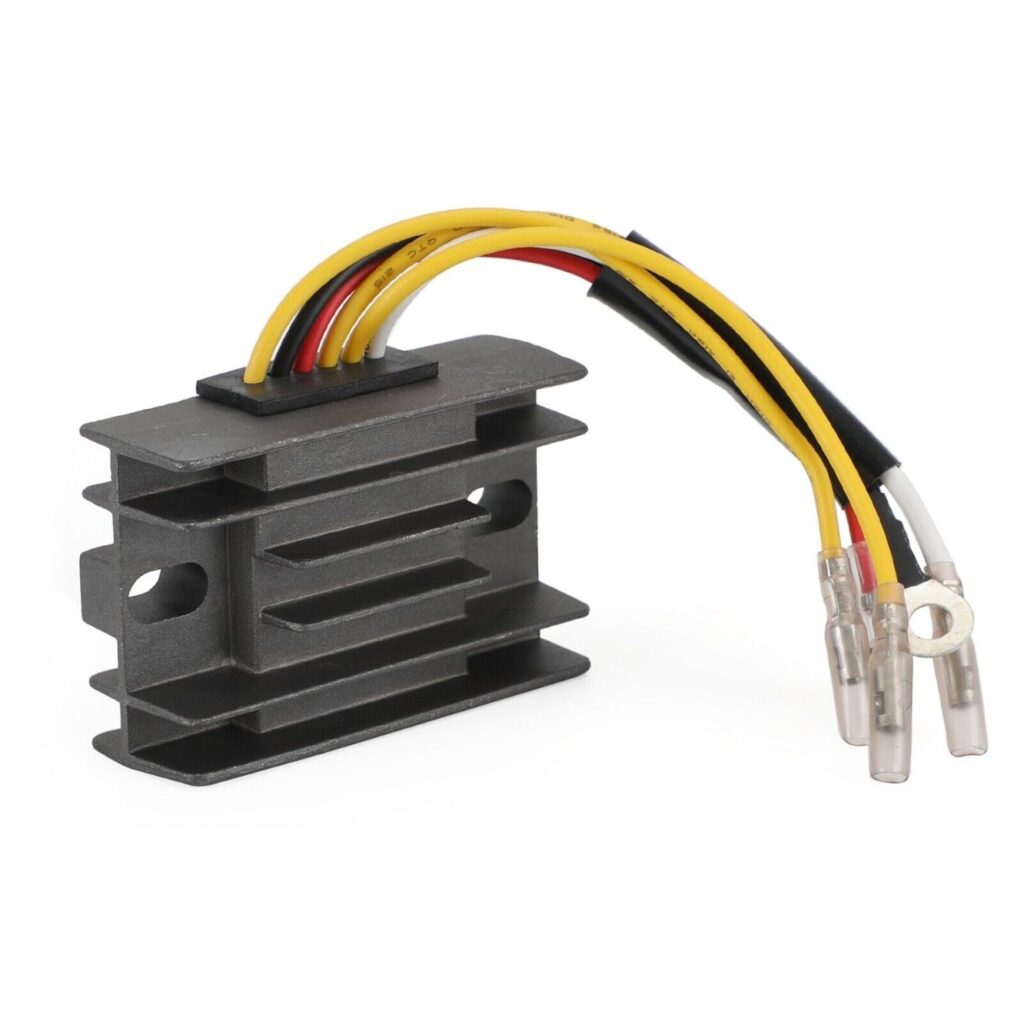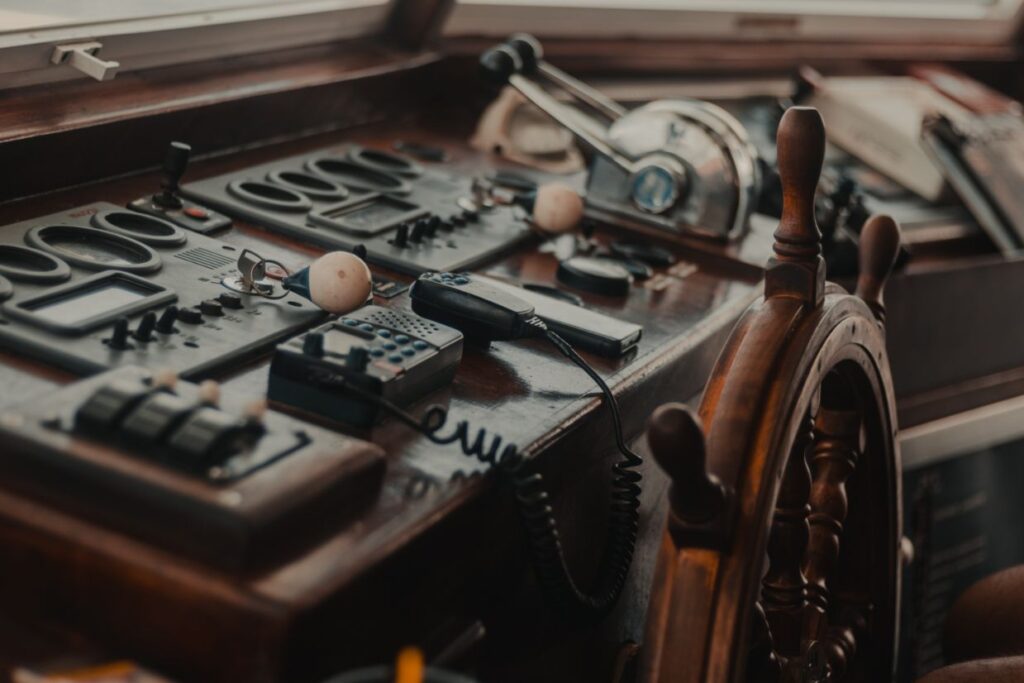There are many parts in your outboard motor, some of which you probably understand and many of which you might not. Ever stopped to consider what the regulator rectifier is in charge of?
In addition to controlling the voltage generated by the alternator or stator, the regulator rectifier rectifies the voltage by converting the necessary amount of AC power to DC power.
For more information on the typical rectifier on a boat, read this article.
What is a Rectifier on Outboard?
The flywheel, stator, and alternator all contribute voltage to an outboard motor’s voltage regulator. It then regulates it to the proper level. That is unless the stator or alternator has a problem.
In general, the output should be between 13.6 and 14.3 volts. A rectifier, which can change the AC current from the power generated to DC output, is also a feature of more recent voltage regulators. DC power, as opposed to the AC power found in your home, is used on boats.
Rectifiers also change the tachometer output from the stator so that the tachometer can receive the proper pulse type and show the motor RPM.
What Does a Voltage Regulator Do on An Outboard?

The outboard’s voltage is the only thing that the voltage regulator is specifically used for. Contrarily, the rectifier is in charge of converting AC power to DC.
The outboard ignition system’s voltage regulator is subjected to a lot of abuse because of its location. The regulator will be under a heavy load if you use a stator with an output of 40 amps.
The regulator may become very hot over time. Regulators that are water-cooled are also available, though air-cooled ones are more typical. If you run in harsh, warm saltwater rather than cold, clear freshwater, this water cooling can have a negative impact on the component.
The regulator limits the voltage that leaves it, protecting the boat’s batteries from damage that can result from overcharging.
Considering that the alternator or stator occasionally produces up to 26 VDC! if the regulator does not exercise control.
What Happens When the Regulator Rectifier Goes Bad?
A weak or malfunctioning water pump is frequently to blame when the water-cooled regulator fails. The regulator burns out as a result of this malfunction due to the extreme heat buildup.
No boater wants to deal with a fire caused by the regulator, which can occasionally get too hot. A bad or excessively low battery can also cause a burned-out or overheated regulator.
The regulator is directly connected to the stator, a crucial component that can also sustain damage. Additionally, a blockage at the regulator can ruin the stator because it produces voltage but has nowhere to go with it! generating additional heat and problems!
A lack of airflow may be to blame if the air-cooled regulator malfunctions. To keep the regulator as cool as possible, just like with the water-cooled option, everything must operate without a hitch.

How to Know If Your Regulator Rectifier is Bad?
So how can you tell if a regulator rectifier is damaged? The regulator rectifier can malfunction primarily in two different ways. The battery may first drain due to the diode burning out.
If the battery is the problem, it won’t be difficult to identify the malfunctioning regulator rectifier. Poor starts, erratic meter readings, and dimmed headlights are some early warning signs.
It’s always a good idea to check the voltage with a voltmeter if you see these symptoms rather than relying solely on them to identify the problem. The bike will begin to drain the battery if the voltage falls under 13 volts. It won’t take long for the engine to stop working altogether once this occurs.
Your regulator rectifier could also stop working if your shunt regulator burns out. The battery will overcharge if the regulator rectifier is unable to control the voltage levels.
A voltmeter can be used to detect overcharging as well. If you notice readings above 17 volts, the regulator rectifier is likely not converting the extra power. The headlights could become increasingly bright before going out with all this extra voltage.
It is important to note that you should always check the condition of the parts in the electrical circuitry on your bike. The procedure is crucial for figuring out whether the regulator rectifier is failing. Failure could result from problems with any component of the circuitry.
Examine the internal connections if your regulator rectifier has already failed. Failure can occasionally result from a manufacturing flaw.
How to Test the Regulator Rectifier for Failure?
The regulator and rectifier are typically found together in a single unit in motorcycles, but in some older models, they are installed separately. Here’s what you need to do to test your rectifier for failure:

- Start by removing the bike’s wires, then set the multimeter to the diode function.
- In order to inspect the positive diode, place the positive lead inside the bicycle’s positive diode.
- Next, attach your negative lead to the stator inputs. The meter should not yet have any readings.
- Connect the positive diode to the negative lead after connecting the positive lead to each stator input, assuming everything is in order at this point. The meter should now display some information, but the specific figures are unimportant.
- Connect the positive lead to the negative diode, the stator inputs, and the negative lead, then repeat for the negative diode.
- When the positive lead and stator inputs are connected, the meter shouldn’t display any readings.
- By connecting the meter leads to the bike’s battery while it is moving, you can inspect the regulator. The reading must be between 13.5 and 14.5 volts, neither higher nor lower. The battery is overcharged and you might need to replace the regulator rectifier if the reading is higher.
You might have to spend anywhere from $20 to more than $100 to replace the regulator rectifier. Given the high cost of motorcycles, being able to spot a failing regulator rectifier could save you a ton of time, trouble, and money.
Early detection of the problem may allow you to replace the affected part for a reasonable cost and possibly prevent full battery failure in the future.



